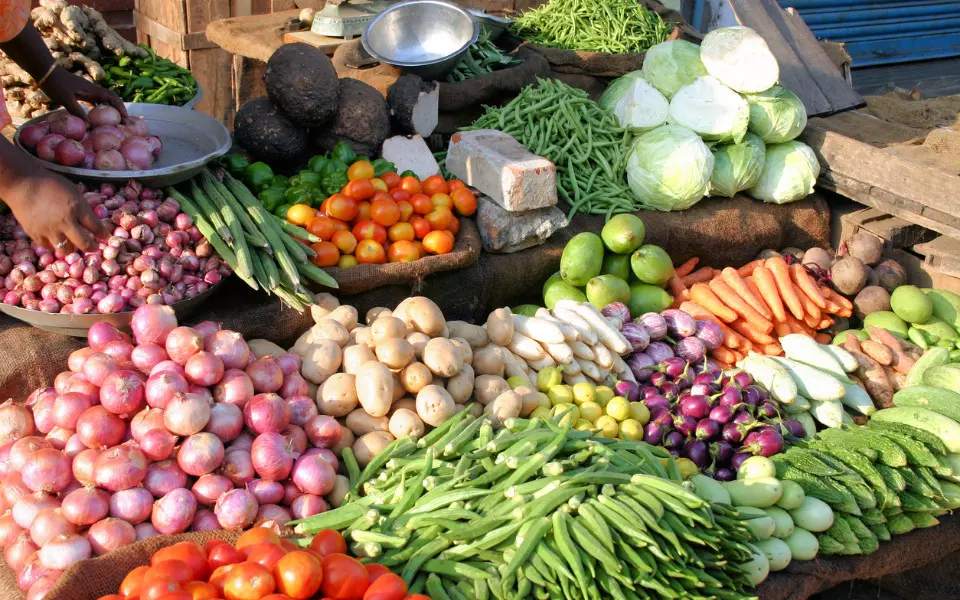
- Home
- India
- World
- Premium
- THE FEDERAL SPECIAL
- Analysis
- States
- Perspective
- Videos
- Sports
- Education
- Entertainment
- Elections
- Features
- Health
- Business
- Series
- In memoriam: Sheikh Mujibur Rahman
- Bishnoi's Men
- NEET TANGLE
- Economy Series
- Earth Day
- Kashmir’s Frozen Turbulence
- India@75
- The legend of Ramjanmabhoomi
- Liberalisation@30
- How to tame a dragon
- Celebrating biodiversity
- Farm Matters
- 50 days of solitude
- Bringing Migrants Home
- Budget 2020
- Jharkhand Votes
- The Federal Investigates
- The Federal Impact
- Vanishing Sand
- Gandhi @ 150
- Andhra Today
- Field report
- Operation Gulmarg
- Pandemic @1 Mn in India
- The Federal Year-End
- The Zero Year
- Science
- Brand studio
- Newsletter
- Elections 2024
- Events
- Home
- IndiaIndia
- World
- Analysis
- StatesStates
- PerspectivePerspective
- VideosVideos
- Sports
- Education
- Entertainment
- ElectionsElections
- Features
- Health
- BusinessBusiness
- Premium
- Loading...
Premium - Events

Companies can tame vegetable price inflation via preserving and processing tomatoes and onions, and popularising the use of processed and preserved ingredients
Food prices are keeping inflation up, as also the threat of further, sustained inflation that scares the RBI into holding its hand on lowering rates. In particular, vegetable prices are sky-high.
Neither the central bank nor the government has an effective solution to the problem. But companies can tame vegetable price inflation, via preserving and processing tomatoes and onions, lead runners in the vegetable price race, and by popularising the use of processed and preserved ingredients via social media, besides normal advertising channels. They need to step up to the plate.
Soaring prices
Food and beverages have a weight of 54% in the consumer price index. Food price inflation is 9.24%. Vegetable prices are a subset of food prices. Vegetable price inflation was 36% for September, was probably higher for October. Onion and tomato prices are soaring every passing day in November. The vegetarian thali is more costly in October this year by 20% as compared to a year ago, according to Crisil. A non-vegetarian thali is up by less than 6%.
Also read: Why Gujarat's farmers given preferential treatment over Maharashtra's, Cong asks Modi
The problem is not that India cannot produce adequate quantities of these vegetables. Rather, the problem is that India is not able to make them available through the year, preserving or processing them for the consumer’s use in the post-harvest months. Tomatoes are a two-season crop in India, harvested once in the summer and once in the winter. Onions too are harvested twice a year, April-May and October-November.
The best way to make them available throughout the year is to process them. Cold storage does not suit all varieties of onions, and if they get wet, storage is not an option.
Tomatoes can be diced, sliced, converted into paste, puree or sauce, and then canned or filled in pouches and bottles. Onions can be cut into pieces, dried into flakes, powdered, mashed into paste on its own or in combination with ginger, tomatoes and garlic. There are any number of ways in which to convert these perishable staples of Indian cooking into forms that keep.
Dampening growth
The trouble with the ornery prices of onions and tomatoes is that they can depress economic growth.
The RBI determines its policy interest rates depending on how high or low the rate of inflation is. Inflation can be measured in multiple ways. The RBI’s preferred measure for calibrating policy interest rates is inflation measured by change in the consumer price index, more than half of which shakes and swings to the beat of food prices. Food prices, in turn, take their cue from vegetable prices, specifically, the most volatile onion and tomato prices.
Keeping onion and tomato prices in check is a macroeconomic service, one that is not in the control of policymakers. Neither fiscal discipline on the government’s part, nor interest rate tweaks by the RBI can tame the price of the tomato or the onion. Only food processing and marketing companies can do the job.
Also read: Govt scraps minimum export price thresholds on onion, basmati rice
Food processing
Cynics object to the food processing solution to seasonal shortages of onions and tomatoes on the ground that these processed forms of tomato and onion are not suited for Indian cooking. This might have been true in the past, but not in these times of social media, social media influencers, and people cooking with a YouTube channel barking out instructions on how to rustle up a grand new dish.
To begin with, let us understand that the assumed immutability of Indian cooking is so much humbug. Onions, tomatoes and potatoes are all foreign to the subcontinent, brought in by European traders, marauders and colonisers. But now, they are integral to the cuisine of any part of the country – of course, the onion is shunned by some.
Just as Indian cooks took in potatoes, onions and tomatoes, cut them, fried them and ground them into a paste singly or in combination, and made them their own, they can learn to use these vegetables in the processed form as well. They might need some persuasion, apart from that of price, to break out of the inertia of habit.
Marketing muscle
What if Mammootty, Rajnikant, Amitabh Bachchan and Shah Rukh Khan were willing to try out new recipes on TV commercials, Instagram reels and YouTube shorts, freely circulated on WhatsApp across the land?
Can the Sholay generation fail to be moved by the sight of Veeru and Basanti cooking a meal together, using pureed tomato squeezed out of a tetra pack? Can millennials be immune to the charm of Virat Kohli and Anushka Sharma seasoning their dal with onion flakes shaken out of a pouch?
India’s FMCG majors have the technical capability to figure out how best and in which forms India’s most perishable political hot potatoes can be preserved and served packaged. They have the marketing muscle to leverage the social media, to which Indians below the age of 35 are in thrall, to get people to adopt new ways of cooking with their favourite ingredients.
Also read: Surge in onion, tomato prices makes veg food thali dearer in Feb: Crisil
Forming cooperatives
Politicians can get into the act, too. They could form cooperatives and farmer producer companies to procure and process the vegetables in question.
India does not need to suffer periodic spikes of tomato and onion prices, export bans that depress sowing, official handwringing and repo rates that stay high even when growth dips low. The remedial action lies with the corporate sector, rather than with the government and the regulators.
Onward, ITC and HUL, to pulp and puree, flake and paste, so that downward the repo rate can go!
(The Federal seeks to present views and opinions from all sides of the spectrum. The information, ideas or opinions in the articles are of the author and do not necessarily reflect the views of The Federal)


